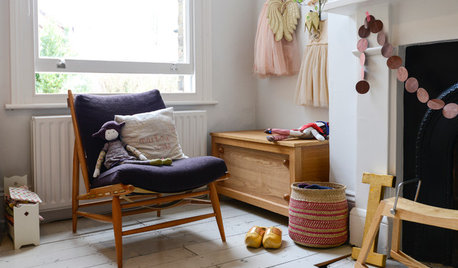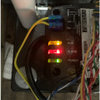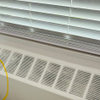new heat pumps for cold temperatures
chckandco
16 years ago
Related Stories

GARDENING GUIDES10 Cold- and Heat-Tolerant Perennials and Shrubs for the Arid West
These flowering native plants shrug off the cold of winter and heat of summer while adding beauty to the drought-tolerant landscape
Full Story
FEEL-GOOD HOMESimple Pleasures: Get Cozy on a Cold Day
Some things are best when the weather is bad. Heat up some cocoa and join the discussion
Full Story
GREEN BUILDINGInsulation Basics: Designing for Temperature Extremes in Any Season
Stay comfy during unpredictable weather — and prevent unexpected bills — by efficiently insulating and shading your home
Full Story
GREAT HOME PROJECTSHow to Add a Radiant Heat System
Enjoy comfy, consistent temperatures and maybe even energy savings with hydronic heating and cooling
Full Story
FLOORSIs Radiant Heating or Cooling Right for You?
Questions to ask before you go for one of these temperature systems in your floors or walls (yes, walls)
Full Story
BATHROOM DESIGNWarm Up Your Bathroom With Heated Floors
If your bathroom floor is leaving you cold, try warming up to an electric heating system
Full Story
LIFEHouzz Call: How Are You Handling the Record-Breaking Cold?
Share your tales, strategies and photos for everything polar vortex
Full Story
ARCHITECTURE15 Smart Design Choices for Cold Climates
Keep your home safe and comfortable in winter by choosing the right home features and systems
Full Story
GARDENING GUIDES10 Cold-Hardy Succulents for Cool-Season Interest
These attractive plants shrug off colder temperatures, and many can be brought inside in containers in extra-chilly climates
Full Story
FLOORSFloors Warm Up to Radiant Heat
Toasty toes and money saved are just two benefits of radiant heat under your concrete, wood or tile floors
Full Story




cpeters99
fsq4cw
Related Discussions
diff between heat pump & aux lockout temperatures in dual fuel
Q
Fol-up on 'Heat pump blows cold air on defrost'
Q
Temperature Cut-Off on heat pump
Q
Cold Climate Heat Pumps
Q
dsilvest
garyg
fsq4cw
freeze-meister
BlueRidgeDirt_hotmail_com
chckandcoOriginal Author
dsilvest
dsilvest
fsq4cw
larry487
bobo1756
dsilvest
jimscanlon
chckandcoOriginal Author
jimscanlon
dsilvest
chckandcoOriginal Author
jimscanlon
dsilvest
chckandcoOriginal Author
dsilvest
spareho_gmail_com
dsilvest
fsq4cw
kvan
spareho
fsq4cw
kvan
googe
zl700
novascotian2008
fsq4cw
novascotian2008
fsq4cw
ted_soleburymountain_com
jimscanlon
alphonse
dsilvest
jimscanlon
rick_the_rancher
garyg
cpeters99
bobo1756
cpeters99
tedsan
countryboymo
cpeters99
nmishr_gmail_com